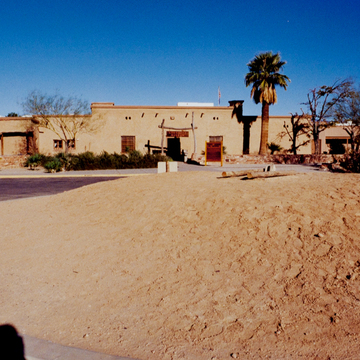The reconstructed pit house demonstrates the major building type erected during the first Anasazi period, whose people are called the Basketmakers (300 B.C.–A.D.600). Measuring approximately 20 feet in diameter, the house was sunk into the ground. A dome-shaped wood frame, covered with hard-packed dirt, was built outside and over the pit, forming the roof. The frame is not visible from the exterior. A wood pole with notches served as a ladder used to enter the house through a hole in the center of the domical roof. The interior is a single round room with a domed ceiling and stuccoed walls; latías form the ceiling.
You are here
Pit House
If SAH Archipedia has been useful to you, please consider supporting it.
SAH Archipedia tells the story of the United States through its buildings, landscapes, and cities. This freely available resource empowers the public with authoritative knowledge that deepens their understanding and appreciation of the built environment. But the Society of Architectural Historians, which created SAH Archipedia with University of Virginia Press, needs your support to maintain the high-caliber research, writing, photography, cartography, editing, design, and programming that make SAH Archipedia a trusted online resource available to all who value the history of place, heritage tourism, and learning.

